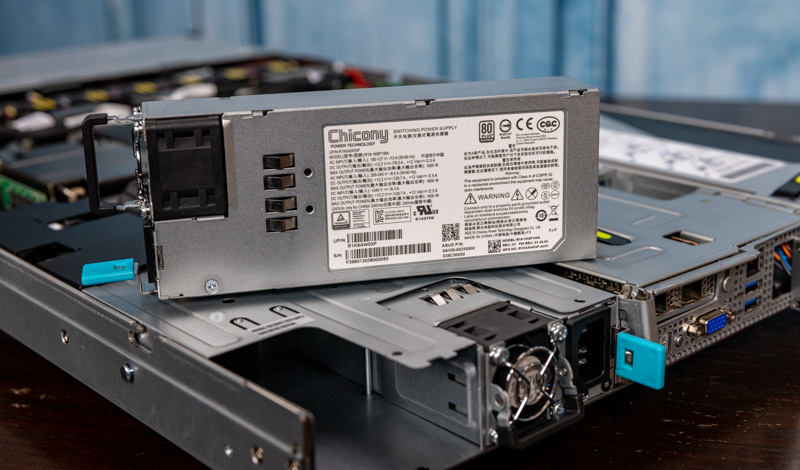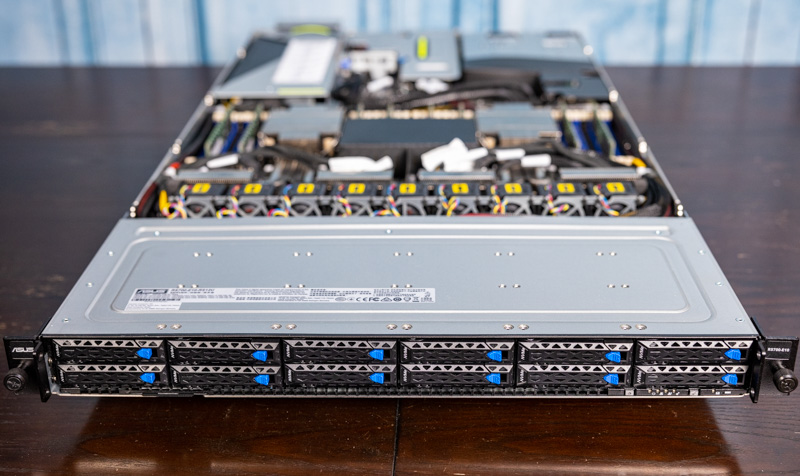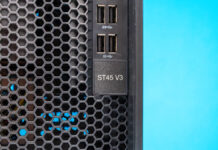ASUS RS700-E10-RS12U Power Consumption
Since we had a relatively full configuration, we wanted to see if the 1.6kW 80Plus Platinum PSUs were sufficient.

When loaded with Platinum 8380’s the A100 and a full set of 12x NVMe SSDs we saw 1.31kW as our maximum power consumption. There was still some room to add more components to the system but the 1.6kW PSU feels like the right level.
STH Server Spider: ASUS RS700-E10-RS12U
In the second half of 2018, we introduced the STH Server Spider as a quick reference to where a server system’s aptitude lies. Our goal is to start giving a quick visual depiction of the types of parameters that a server is targeted at.

As a 1U platform, this is a platform with a lot of NVMe storage helping in the high-performance storage category. We also get the full dual Xeon setup with 32 DIMM slots. Since this is a 1U platform, some density is sacrificed versus 2U servers or also 2U4N servers, but this is still a solidly dense platform.
Final Words
Overall the ASUS RS700-E10-RS12U performed well. This is one of those platforms where it was fun to see some of the different innovations that ASUS made. A few examples were the cooling design, PCIe riser layout, 12x 2.5″ NVMe SSD array, and even the rear I/O panel. This certainly feels like a server designed with a personality.

Oftentimes we get comments that servers are all the same. This is a dual Intel Xeon (Ice Lake) server with a NVIDIA A100 that checks many feature boxes for mainstream 1U platforms. Still, having diversity in server design and seeing the unique ways the ASUS engineers solved for challenges is very exciting.




haha, the second RS is for Redundant PSU, and first RS stands for Rackmount Server
If that’s true Juno Shi it should be RP (redundant power) not RS
The name basically tells you:
RS – Rack Server
7 – DP Mainstream
0 – 1U
0 – W/O IB
–
E10 – Intel Mehlow / Whitney
R – Redundant PSU
S – Hot-Swap HDD Bay
12 – 12 HDD Bays
U – All Bays support NVME
Hope that clarifies it.
This looks like a great server appliance, however (and I know this is difficult) how does it cost – compared to a similar priced Dell or HPE?
Our in-house IT dept only buys HPE – everything. Sure it’s good hardware but you can’t help but think that we’re paying a premium for the name (and highly likely someone’s brother-in-law works at an HPE channel supplier)
Does this support 6 or 12 NMVe with 1 CPU installed?